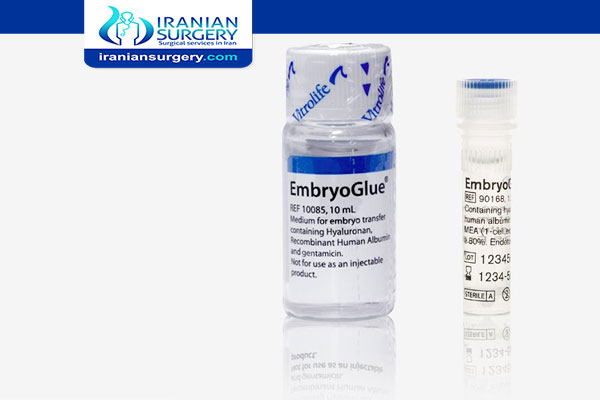Does assisted hatching help implantation?
What is embryo glue?
Can assisted hatching cause twins?
How long does it take for a hatching embryo to implant?
How effective is embryo glue?
Is a hatching embryo more likely to implant?
How long does it take for an embryo to stick?
What is a good fertilization rate for IVF?
Embryo glue is another IVF add-on with the goal of assisting the embryo to implant.
The use of embryo glue is when the embryo is placed in a substance that is believed to help it attach and implant better to the uterine lining. Traditionally, clinics used a fibrin sealant to this; however, this does not appear to have been studied recently and the focus has shifted to those substances containing hyaluronan, which are considered more effective. Hyaluronan is a substance that is naturally found in the reproductive tract of women and is believed to form a viscous solution that helps with the embryo transfer process.
the early embryo is surrounded by a thick layer of special proteins called the zona pellucida. Before an embryo can implant in the womb it has to break out or ‘hatch’ from its zona pellucida. It is thought that by assisting this hatching – using acid, lasers or other tools to thin or make a hole in the zona pellucida – it helps the embryo to hatch and therefore implant.
Read more about : Does icsi increase chance of twins?
Read more about : Embryo donation process
Read more about : Ivf process timeline
Read more about : Ivf process start to finish
Does assisted hatching help implantation?
Assisted hatching is a procedure where we can help the embryo “hatch” from its “shell” by creating a small crack in the zona pellucida. It is believed that assisted hatching can help an embryo implant in the uterus, leading to higher pregnancy rates in some patients. So, assisted hatching can improve the chances of implantation during IVF and is considered an option for patients who are able to achieve good fertilization and embryo cell development, but the zona pellucida is excessively thick and they do not conceive.
Read more about: Frozen embryo transfer tips
Read more about : How much does 1 round of IVF cost in Iran?
What is embryo glue?
Embryo Glue is an implantation promoting transfer medium which contains a substance known as hyaluronic acid. Hyaluronic acid is found in the human uterus, and by adding it to the culture media it more closely mimics the natural environment. A high concentration of hyaluronic acid is transferred with the embryo back into the uterus on the day of transfer. It can be used in the transfer of an embryo at any stage. Embryo Glue may benefit couples who have had multiple cycles without implantation although it is available to any patient.
Read more about : How Long Does it Take to Get Pregnant with ICSI?
Read more about: Genetic testing embryos before implantation
Can assisted hatching cause twins?
The risk for identical twins might be slightly increased when assisted hatching is applied. Medical complications are higher in identical twin pregnancies than in normal, singleton pregnancies.
Read more about: Embryo hatching after thaw
How long does it take for a hatching embryo to implant?
The implantation takes place about 7 to 8 days after fertilization of the egg. The time required for implantation in both the cases, normal pregnancy and pregnancy through IVF, is more or less the same. Hatched embryos implant one day early, which may allow a greater opportunity for implantation to occur, particularly if the endometrium is advanced by the ovarian stimulation in a fresh transfer.
Read more about: What drugs do you take for frozen embryo transfer?
How effective is embryo glue?
some clinics add hyaluronan, known as "embryo glue," to a lab dish to increase implantation chances. The practice has been found to increase the chances of live birth by about 10% in the United States, which translates to 39% of IVF cycles resulting in a live birth.
Read more about: Frozen embryo transfer step by step
Is a hatching embryo more likely to implant?
Hatching is the term used when the blastocyst cells start to break through the shell (zona pellucida) of the embryo. Assisted hatching is used in some clinics to make a small hole in, or to thin, the shell of the embryo in an attempt to help it hatch. Spontaneously hatching/hatched blastocysts have a better potential to implant and develop into a positive pregnancy.
Read more about: frozen embryo transfer timeline
How long does it take for an embryo to stick?
The first 24 hours after an embryo is transferred are most likely the most critical. It is within this time frame that an embryo has to “attach” to the uterine wall before it can fully implant, which may take several days. Therefore, for the first one to two days, stay home and chill out. This means the implantation takes place about 7 to 8 days after fertilization of the egg. The time required for implantation in both the cases, normal pregnancy and pregnancy through IVF, is more or less the same.
Read more about: ICSI success rate after embryo transfer
What is a good fertilization rate for IVF?
Fertilization rates of 70 to 80 percent of all eggs injected – equivalent to fertilization with normal sperm – are currently being achieved, and pregnancy rates are comparable to those seen with IVF in couples with no male factor infertility. Only 30-50% of embryos growing on day 3 will reach the blastocyst stage. So from our 8 embryos that initially fertilized, about 3-4 will be viable for transfer.
Read more about: chance of twins with 2 embryos transferred


